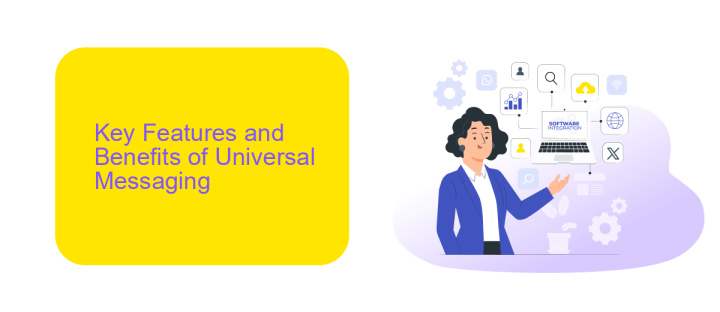What is Universal Messaging in Webmethods
Universal Messaging in Webmethods is a robust and scalable messaging platform designed to facilitate seamless communication between distributed applications. It supports various messaging paradigms, including publish/subscribe, message queues, and request/reply, enabling real-time data exchange across diverse systems. This article explores the core features, benefits, and implementation strategies of Universal Messaging, highlighting its pivotal role in modern enterprise integration.
Introduction to Universal Messaging in WebMethods
Universal Messaging in WebMethods is a robust and scalable messaging platform designed to handle the diverse needs of modern enterprise applications. It facilitates seamless communication between various systems, applications, and services, ensuring reliable and efficient data exchange. This messaging solution supports multiple protocols and messaging styles, making it a versatile choice for different integration scenarios.
- Supports both synchronous and asynchronous messaging
- Ensures high availability and fault tolerance
- Compatible with various messaging protocols like JMS, MQTT, and AMQP
- Scalable to handle high-volume data transmissions
- Integrates easily with existing WebMethods components
Incorporating Universal Messaging into your WebMethods environment can significantly enhance your integration capabilities. For instance, using services like ApiX-Drive can simplify the setup and management of these integrations, providing a user-friendly interface to connect multiple systems without extensive coding. This combination ensures a reliable, scalable, and efficient messaging infrastructure that meets the demands of today's dynamic business environments.
Key Features and Benefits of Universal Messaging

Universal Messaging in Webmethods offers a robust and scalable messaging solution designed to handle real-time data distribution across various applications and platforms. Its key features include support for multiple messaging protocols, high availability, and seamless integration with existing systems. This ensures that organizations can achieve reliable communication and data exchange, even in complex and distributed environments.
One of the major benefits of Universal Messaging is its ability to facilitate smooth integration with third-party services like ApiX-Drive, which simplifies the process of connecting various APIs and automating workflows. Additionally, its advanced security features, such as encryption and access control, guarantee that data remains protected during transit. By leveraging Universal Messaging, businesses can enhance their operational efficiency, reduce latency, and ensure consistent performance across their IT infrastructure.
How Universal Messaging Fits into a SOA Architecture

Universal Messaging plays a crucial role in a Service-Oriented Architecture (SOA) by providing a reliable and scalable communication backbone that connects various services and applications. It ensures seamless data exchange and integration across diverse systems, enabling real-time and asynchronous messaging capabilities.
1. **Interoperability**: Universal Messaging facilitates communication between heterogeneous systems, ensuring compatibility and smooth data flow.
2. **Scalability**: It supports high-volume messaging, making it suitable for large-scale enterprise environments.
3. **Reliability**: With features like guaranteed delivery and message persistence, it ensures that critical data is always transmitted reliably.
4. **Flexibility**: Universal Messaging can handle different message formats and protocols, making it adaptable to various integration scenarios.
5. **Security**: It provides robust security mechanisms to protect data in transit and ensure secure communication between services.
Incorporating Universal Messaging into an SOA architecture enhances the overall efficiency and reliability of service interactions. Tools like ApiX-Drive can further streamline the integration process by automating data transfers and synchronizing information across multiple platforms, thus simplifying the management of complex SOA environments.
Prerequisites for Using Universal Messaging

Before you start using Universal Messaging in Webmethods, it's crucial to ensure that your system meets certain prerequisites. These prerequisites help in the smooth functioning and integration of Universal Messaging within your existing infrastructure.
First and foremost, you need to have a compatible version of Webmethods installed. Make sure your hardware and software configurations align with the requirements specified by the Webmethods documentation. Additionally, network settings should be optimized to support messaging protocols.
- Webmethods installation and configuration
- Proper network settings for messaging protocols
- Administrative access to manage configurations
- Basic understanding of messaging concepts
- Optional: ApiX-Drive for seamless integration setups
Ensuring these prerequisites are met will help you leverage the full potential of Universal Messaging. If you are considering advanced integration setups, services like ApiX-Drive can simplify the process, offering a streamlined approach to connecting various applications and automating workflows.
Best Practices for Implementing Universal Messaging
Implementing Universal Messaging in Webmethods requires careful planning and adherence to best practices to ensure optimal performance and reliability. Firstly, it is crucial to design a scalable architecture that can handle the anticipated message volume and growth. This involves setting up appropriate clustering and load balancing to distribute the load evenly across multiple servers. Additionally, regular monitoring and tuning of the messaging system are essential to identify and address potential bottlenecks or performance issues.
Another best practice is to ensure robust security measures are in place to protect the messaging infrastructure. This includes implementing encryption for data in transit and at rest, as well as using strong authentication and authorization mechanisms. For seamless integration with various applications and services, consider utilizing integration platforms like ApiX-Drive, which can simplify the process of connecting different systems and automating workflows. By following these best practices, organizations can effectively leverage Universal Messaging to achieve reliable and efficient communication between their applications.
FAQ
What is Universal Messaging in Webmethods?
What are the key features of Universal Messaging?
How does Universal Messaging enhance integration capabilities?
Can Universal Messaging be used for cloud-based integrations?
What tools can assist in setting up and managing Universal Messaging integrations?
Time is the most valuable resource for business today. Almost half of it is wasted on routine tasks. Your employees are constantly forced to perform monotonous tasks that are difficult to classify as important and specialized. You can leave everything as it is by hiring additional employees, or you can automate most of the business processes using the ApiX-Drive online connector to get rid of unnecessary time and money expenses once and for all. The choice is yours!

